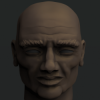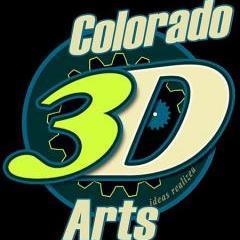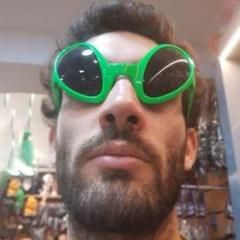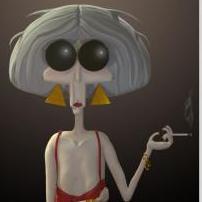Search the Community
Showing results for tags 'export'.
-
3DC crashing when exporting gltf files. I updated to the newest version and its still happening, i have done everything as per the video Carlosan posted about exporting gltf files for SL and its worked on other models but this one it says resave as this file is corrupted as it gets to a certain uv set, then i save to a new file and rinse repeat. Can anyone suggest something to me or know why this might be happening? Thanks
- 7 replies
-
- gltf
- gltf file format export khronos
-
(and 5 more)
Tagged with:
-
Hey everyone... As I did not have much knowledge with 3d-coat in relation to Define Measurement Units and Edit Scene Scale. I started a project without paying attention to these two important settings that are found in the Geometry menu. I would like to ask the help of all of you to used this topic to explain the subject better and with that you would help others who use 3D-Coat. Doubt 1) In a project I'm working on, only now that I've realized that the values in the Edit Scene Scale are all changed as you can see in the image I've attached. If I change the value of SceneScale to 1 will what happens in my file? I would have problems if I change this value which is currently 137.963562 for 1? Could I change units from millimeters to meters? Because it is in millimeters... Could someone explain it better? Doubt 2) I realized that by default 3D-Coat uses millimeters. I would like to have a 1: 1 ratio between 3D-Coat and Blender because of a 3d print job and I also believe it will help in mesh workflow for animation and games. Currently in 3d-coat version 4.8.21, what would be the best configuration between 3d-coat and blender without there being any problems in the scale and positioning when it imports -> exports -> imports again for 3D-Coat? I realized that when I use these 2 programs, the scale almost always changes. Maybe because I do not know how to configure. Sometimes the sculpture when it returns to the 3d-coat comes either large or small and the pivot gets altered also causing the sculpture to be located in another position completely different from when I exported. I think using meters would be the best unit of measure because I've read that physical simulations, displacement maps and other things will be best produced when configured using actual measurements of the world in meters. How do you work with Measurement Units and How does the Edit Scene Scale work? Doubt 3) How to properly set up each project (for 3D print? for Games? for animation?) What would you advise for 3d-coat users in the initial scene setup within 3d-coat? Anyone who is knowledgeable in this subject, please share with the whole community about all of these subjects that I mentioned above. This is very important... Thank you for your attention and help.
- 22 replies
-
- measurement units
- scene scale
-
(and 4 more)
Tagged with:
-
Hi Is there an option somewhere that disables 3DCoat from exporting out an MTL file when you export out a retopologised mesh? I don't need it and it's a bit of a pain having to delete them every time. Thanks
-
Hi. This is a short summary to get Applink working for Blender. If you have a brand new 3dCoat version, (compare the date and) copy COATs Applink from: ------------------------------------------------------------------------------------------------------------ C:\Program Files\3DCoat-2023\data\ToolsPresets\InstallAppLinks\Blender\files ----------(please modify the this path for yourself, example look for "3dCoat-2024", as copy and paste would not work in this case) to your Blender Folder: ..\blender\(version)\scripts\addons\io_coat3D\. For installed Blender versions this is in the Roaming folder. The versions shipped with 3DCoat are likely newer -->new features. ----------------------------------------------------------------------------------------------------------------------------------------------------------------------- 1. Right now April 2024, there is no need for the forked version. 2. There are a lot of folders for Applink. I try to clarify the dependencies in the Image. The most important file/folders seem to be ->'documents\3DC2Blender\exchange_folder.txt' ->'documents\Applinks\3D-Coat\Exchange\' Look If you have the same or similar folders. If Applink is not working, then one of the files is maybe pointing to wrong or outdated direction. 3. Open Blender and make sure 3DC Plugin is enabled. Then look on the right for scene properties. There you can set the exchange Folder, which should be: C:\Users\'Username'\Documents\Applinks\3D-Coat\Exchange\. The other 'Object/Texture' Field can be left empty. 4. Open 3DCoat, we take Modelling Room. 5. Back in Blender select the fancy Cube. In the 3D View 'Applink Window' select 'Retopo mesh as new layer' and Send. 6. In 3D Coat you should now see the placement arrow. Scale it Up or Down to see if something arrived in Coat and hit Apply. There should now be a new layer named '__something'. 7. If you get so far then there should be 'Export to Blender' under File. If 3DCoat asks for a filename it is working. The Folder should already be 'ApplinkObjects'. 8. Choose Name and use fbx format. 9. In Blender hit 'GetBack' from Retopo This should be it for now. I hope it works! ------------------------------------------------------------------------------------------------------------------------------------------------------------------------- Export to Blender missing? Have a look: Check my 3Dcoat Script for this: Blender_Export_to_Button.as or install it as 3dcpack: Blender_Export_to_Button.3dcpack Then 'run script' from Menu in \Documents\3DCoat\UserPrefs\Scripts. Its function is displayed in the linked post, it makes the missing folders and files. I've tested it sucessfully. Edited just now by Ctc_nick
- 5 replies
-
- 9
-

-

-
- export
- 3dcoatapplink
-
(and 3 more)
Tagged with:
-
Hi all, Simple3DCoat addon is for Blender+3DCoat production. This is a fork of the official one made by Haikaikalle . Blender 2.93+ 3DCoat4+ Features: Set the Exchange Folder of 3DCoat manually. Custom Textures Path for export/import. Export/Import through Obj/Fbx formats. ExportMaterials, ApplyModifiers checkboxes. No PBR Materials support. Sorry. Simple to Use Screenshots: How To Use: - Enable the Addon and set the Exchange Folder. - Export/Import models back and forth. Download: Sources: https://github.com/mifth/mifthtools/tree/master/blender/addons/2.8/io_simple_3dcoat Latest MifthTools Master Download (ZIP): https://github.com/mifth/mifthtools/archive/master.zip Enjoy.
- 153 replies
-
- 3
-

-

-
- export
- 3dcoatapplink
-
(and 3 more)
Tagged with:
-
I'm new to 3D, still getting the hang of things, so sorry if this is a silly question Everything looks fine in the viewport, but after exporting, the visor section of my texture isn't showing up (The main texture on the helmet is also coming out way darker than in 3DC (not my main issue though) I'm sure there's something simple I'm missing, just not sure what :P To clarify, I'm exporting specifically for Fallout 4 which requires Normal/Diffuse/Specular maps I've attached examples, and my export settings Is there something specific I need to do to have those elements come out correctly? Thanks in advance!
-
Hi everyone, this is a WIP and not (yet) official guide, I'm working on a tutorial that might be clear-cut method from start to finish. You can leave a comment if I'm missing something, or point out an error. Some information is entirely my own understanding, some may have been used from your own posts etc Subheading: PaintRoom --> Retopo Room --> Bake to MicroVertex --> Bake Displacement to Lowpoly mesh This Article discusses the the complete workflow(s) from model creation to Baking both Material maps and mesh of your Highly detailed Per Pixel Painting, Microvertex and Ptex Projects using Smart Materials that utilize displacement maps. 1. Displacement Topology - Preparing your model: Voxel meshes are ideal for displacement due to uniform faces that prevent painted textures on the surface from stretching and other glitches. It's also very important that your models don't contain hard edges otherwise faces will likely mix into each other creating distortion. If you need high performance in your 3D application, tris are best for game engines due to efficiency, performance and file size but Micro Vertex working with tries can create artifacts. Using Quads with Microvertex maybe more ideal to paint characters and in general quads are preferred for smoother surfaces and better deformations for animations. For Film & Game Engine Optimization that uses Automatic Frustum & Occlusion culling, plan your model. Large objects such as cliffs or walls can hide/disable other parts or areas not seen by the camera or animation viewport, so it's ideal to slice the model in such a way as allowing parts to be automatically hidden to speed up Renders and Game Performance while making visible and focusing only on what the camera actually sees. There is an essential rule of mesh resolution that needs to be followed and that is that your lowpoly model needs enough resolution initially to be subdivided from. The reason is that your model could likely be full of cracks in other programs when displacement maps are applied, it doesn't have enough actual geometry to deform (even with tessellation) You will see that smooth mesh by subdivision helps but may not fix the problem, the model needs enough resolution from the beginning of the paint job. There are a few methods of preparing your model for painting and we have it numbered from best to least under: Displacement Topology -Preparing your model, UV Mapping, Painting and Baking the Mesh. (1) Per-Pixel-Painting Topology: Ideal for landscapes -use meshes with tries (can be set upon import) Import a low poly mesh, in the menu set to "Triangulate" if using quads, set UV to "keep UV" , Subdivision can either be 0 of you want to use tessellation instead while painting (faster but lower smooth quality) or use "subdivide" (higher quality but slower to paint) If you use Subdivide 3DCoat may automatically choose a medium setting which may be sufficient. You can always add tessellation to each of your paint objects (models) later. Choose "full smoothing" if you want accuracy using Smart materials that use height maps. (2) Ptex Topology Method Topology: Ideal for Characters using quads. Upon New Ptex project topology, import model, choose" Auto-Retopo with Ptex". -It will do the the retopology for you and then send you directly to Ptex painting. (3) Micro Vertex Topology Topology- Ideal if you have to use models with quads for quality Character deformations in animations. -unless it's best and safe to convert them to tris upon import and simply export the maps but the maps might have to be exported for quads. UV Mapping: Manual UV tip: Best approach to avoid glitches is to cut UVs in a grid with straight lines, Voxel topology makes areas to cut easier to identify. Cutting into grids has equal/balanced pull on the vertices in all directions. To get more detail especially with landscapes that don't need organized UV islands, aim for islands to be square or rectangular and aligned vertical or horizontal. The more UV space filled in the better. Automatic UV Method: (1) Using Per-Pixel-Painting Mode: (Community input required for the general consensus of the best UV creation in 3DCoat -ideally with parameters that are used in the manual UV creation process) (2) Using Ptex Method Mode: The Ptex Paint method provides automatic UV mapping upon export. (3) Using Micro Vertex Mode: (Community input required for the general consensus of the best UV creation in 3DCoat -ideally with parameters that are used in the manual UV creation process) Painting Tip: When painting displacement closer to less rounded edges, reduce Depth value to approximately10 or lower, paint and test, undo, reduce or raise value, paint and test etc. Some Smart Materials contain AO, after selecting one that has AO maps you will be asked if you want to generate an AO layer because the smart material requires it. This is optional, It might be better to keep your project light, and bake AO at the end of your painting but painting with AO can help you see details better and know what you're getting right away. You can create and edit your smart materials to fine tune it. Learn about creating Smart Materials Here (You can create Smart Materials in any existing or empty project) (1) Per-Pixel-Painting: is currently the Best Method to paint Smart Materials using displacement, to understand why, visit this link (2) Ptex Painting: Since Ptex and Smart Materials have been made compatible with each other, more investigation is needed to determine if it's more advantageous over Per-Pixel-Painting but at this time it uses Quads but can it be exported to tries and still look good? (Community input required for this for the general consensus) (3) Micro Vertex Painting: Since Micro Vertex and Smart Materials have been made compatible with each other fairly recently more community input is required to determine the benefits. *Micro Vertex is compatible with creating displacement maps and "in theory" is compatible with Vector Displacement Smart Materials which should open the door to paint complete whole Colorful photo-scanned models but Smart Materials may or may not yet have added Vector Displacement Map Compatibility. A Smart Material with Vector maps maybe the first of its kind to produce Vector Displacement and Color at the same time. Baking Displacement to low poly to reduce the need for high tessellation in other 3D applications -WIP This wasn't the workflow in the past. Generally Displacement maps are created from the differences between the original and the high poly version (which is what you want) however, this is just for creating the correct displacement maps. During your painting with displacement maps used in your Smart Material, as it changes the vertex positions in the high poly it also changes some in the low poly. Bake To Hi Poly Mesh (1) Using Per-Pixel-Painting Mode: bake the displacement into a newly created high poly mesh added to a layer in the paint room using "Bake sculpt mesh onto paint room mesh" (Top Menu Under Bake) Exporting Textures: Normally when exporting textures with subdivision levels, layer o must first be selected. The (1) Using Per-Pixel-Painting Workflow: (2) Using Ptex Method Workflow: (3) Using Micro Vertex Workflow: Bake Displacement -To-Lowpoly Mesh: (1) IF you're using "Per-Pixel-Painting" send to: Retopo Room, choose "bake into scene Microvertex" then bake sculpted mesh to sub-D (you set it with option menu when bake) + displace applied mesh in paint room as polygon group name layer. (real deform high polygon mesh) (2) IF you're using "Ptex Painting" send to: The Ptex Paint method provides automatic UV mapping upon export. (3) Send Micro Vertex to: Different Displacement painting methods and evolution - what you need to know before you decide your workflow: https://3dcoat.com/wiki/index.php?title=3.1_Per_Pixel_vs_Microvertex Methods of Setting up Displacement in external applications Using traditional Methods - Adding extra geometry to instruct the shader or the program to add more vertex points and positions 1. Tessellation - Set tessellation level only as high as the details need to be. Tessellation can come in two common forms; 1.Distance-based that offers Level of detail (LOD) on the model the closer it is to the camera and 2.Full tessellation (currently used in 3DCoat) 2. Smooth mesh By Subdivision - Subdivision like full tessellation offers no ability for LOD, meaning it's going to reduce performance but like tessellation you can increase or decrease levels. It's the best visually and if tessellation doesn't close cracks due to lack of geometry, smooth mesh by subdivision might fix that. This mode is also incompatible with some GPU Renderers like Iray and will greatly slow it down. Your application may let you combine both methods; "Smoot Mesh By Subdivision" and "Tessellation." Generally using Level 1 of "Smooth Mesh By Subdivision" and "Tessellation" level between 1-2 gives optimal results for rendering. Emerging No Extra Geometry Methods 1. Screen Space Displacement mapping (SSDM) - Some initial experiments from developers have shown real-time game play of 500-1000+ FPS in Unity from the developer "Oddity Interactive" (Using the performance heavy photo-scanned RD-Textures was more in the 400 FPS range) Another Example
- 1 reply
-
- 5
-

-

-
- per pixel painting
- displacement workflow
- (and 10 more)
-
3DCoatGL64_GuqykS4vE4.mp4 The video above is very descriptive of the error. I have 2 objects in the paint room that i need to export, but 3D is shutting down. This is the file for download and testing: https://we.tl/t-Fb7KJsMP9T One thing that could be the error is the AUTOPO, it leaved some holes in the mesh, but i didn't bother to clean it. Thank you!
-
I haven't used 3D Coat in years. I'm coming back to it, but on version 2021, so I'm missing how to export a model with textures to FBX. I can see that I can export from the Paint Room and there is a Texture Baking Tool, but there appear to be multitudes of places to export various things in different rooms and I miss the old menu where you decide the resolution, file type, etc. Maybe I just need to take more time with it, but when I use the Texture Baking Tool and export, there are no files generated. I did see how this is supposed to be done in the manual (https://3dcoat.com/dokuwiki/doku.php?id=import_export:exporting_from_the_paint_workspace), but when I click Export Objects and Textures from the Paint Room simply has me choose a file type and name. There is no dialogue, as shown in the manual. Getting the textures exported is where I'm mainly stuck, but I can find nothing on how to export in version 2021.
-
Using Maya 2020.4 and 3DC 2021.0.2 (New Release). I tested exporting to FBX and OBJ from the paint room to open in Maya. I get proper textures but the geometry is garbled up badly. I made a voxel to surface geo and exported straight from sculpt room with some decimation and that exports fine to fbx and obj. But from the paint room for some reason it's a mess. Haven't changed but a few hotkeys in 3dc 2021. This is using the export constructor btw. I can send the 3DC and Maya files if needed to support but they are a bit bigger than the allowed 44mb.
-
Hi, i have a weird scale issue with a particular file. If i tried with new import in a new project either in 4.8.40 or 4.9.65, both will not have issues with scale. However, if i tried new import to an existing project, the scaling is off when i export to external program as seen in the image. work process : 1) import obj(female char) to current project. 2) use a box to cut off the shape of the obj (Female Char). 3) export box as retopo obj 4) import box to external program to match the obj. Failed as shown in the image! So..... how to reset scale in a current project? or export scale correctly.
-
Hi! So, I've been struggling for some time now. I'm making characters in DAZ and I want to import one into 3DC and to be specific: I want to get him into the scene and then slize his face off. What's the exact workflow here? Wich room do I import him into? Wich settings? Can you keep the maps while doing this? Wich tool do I use to cut a part of him away? Is it possible to export this guy with the MTL file still intact to render in other software? I want to get him back into DAZ for rendering! Right now I'm drag/dropping him into 3DC, choose import for per-pixel painting, but when I press Sculpt he disappears. And in the other rooms i can't find a function like "Cut off" in the sculpt room. When I pick import for vertex painting/big reference his maps look super weird, like low-res or something.
-
Hi there. Here is a basic summary, I'm working on a hand-painted texture. Nothing else. But when I export the 'diffuse' map it comes out very very wonky when put back onto the original Autodesk Maya mesh it came from. Can anyone explain the reason for this?
-
Hey Guys, I'm just wondering if it's possible to merge paint objects, or export with one material set? as currently i'm getting 10+ material sets in substance when I only want one, and I know it's because I have multiple paint objects. Any help would be appreciated, cheers.
-
Hello, just a quick question. is it possible to maintain my selection tags and material assignments from Cinema4d to 3D Coat and back? I had assigned materials and after i did my UVs in 3d Coat and exported my fbx back to Cinema4D all that was gone replaced with a single generic material. No selection tags, no materials? Could this be because of an export setting or is the fbx file format? i dont know. Thanks
-
Hi, I need to access the displacement depth factor after exporting to obj. When using the vanilla export options (the one with checkboxes for color, roughness, etc and displacement options depth, normalization, extension) the depth factor is written into the .mtl file AND to a separate disp.txt file...-> Awesome! When I use an export preset (e.g. Unreal 4), the export options UI changes and more importantly the Depth Factor doesn't get exported (not in the .mtl and no disp.txt). Is there a way of enforcing that disp.txt file? thanks!
-
Hey Guys, I'm not that familiar with 3D Coat yet. For awhile I was mostly using Blender but more recently i've also grown rather fond of 3D Coat especially with the UV Toolset, Voxel Sculpting, and Retopo Tools it has which I happen to like a lot better. I'm working on a first indie game I started with most of my models done so now I just need to texture them decently so that they all look decent when used together for game objects. Originally I was exporting the UV Image only then opening that in Photoshop since I have textures I would then map over it because I'm not very good at texture painting yet so that is why I have gone that route for the time being until I can figure it out better over the course of time. Now, in 3D Coat I am looking for that but I can't seem to do that? Is there no option or way to do that or am I missing it somewhere? I have poked around and tried to look for clues and made several attempts to figure this out more but other than messing around with it more until I get the results I desire. Any advice about this or could someone at least help point me in the right direction that has more experience than me with this?
-
I model an object in Blender, exported it to 3DC for voxel painting & texturing. When I export back to Blender, the object is there but not the painted object. Any suggestions please? I am using the 3DC export setup below.
- 10 replies
-
- voxel paint
- blender
-
(and 1 more)
Tagged with:
-
Hi I have been using this program for a few days now and when I have have created images I have then gone to File/ Export and download a .obj version. It also gave me a choice to reduce points This export option is no longer available. I have removed and re-installed the software but it is still missing. Any ideas of how to fix this. thanks for any hep.
-
Hi, I imported a high poly object into the sculpt room to use as a retopo reference. It was too small so I scaled it up with the Gizmo. Switched over to the Retopo room and built a retopo mesh over it. Exported the retopo mesh; which is now too large compared to the original high poly reference mesh when it is appended as a new subtool back in Zbrush. What is the proper workflow here to handle scale issues. The original high poly mesh was sculpted in Zbrush and is a proper size ( approx. 2.0-2.0-2,0 in tha software). Thanks in advance- I looked through the forums but must have missed the answer.
-
What are the proper export settings for normal maps from 3D Coat to Maya (Arnold IOR)? In File > Preferences I have tried using numerous normal settings (Software Preset, Calculation Method, Swap TB), but I still feel like my normals are looking inverted in the Maya Arnold render. What is the proper normal map export workflow?
-
Hi There, Trying to work out if it is possible to export a voxel object from the paint room, into a new scene while keeping all the paint layers.
- 2 replies
-
- voxel
- paint layers
-
(and 1 more)
Tagged with:
-
Hey guys, really need help with this one as it's halting production on my art pipeline. So as you can see this smart material is very simple. It paints on fine, but when I export the layers it inherits the flat colour from the colour picker as part of the layer. I need the transparency from the green layer to stay intact. So in other words what I am after is a smart material that fills this pattern with green and no blue in the background just transparency. I've achieved this before with the same setup on a different smart material and now the old smart materials are inheriting the same problems. Is this a reinstall situation? Please help! Thanks, Guats












